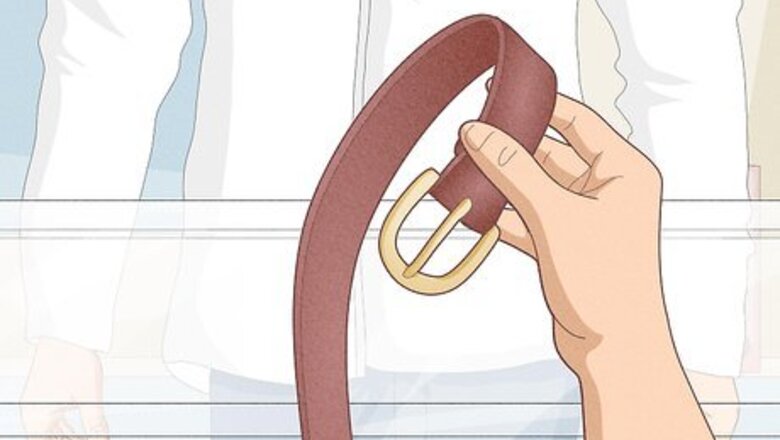
views
Determining Your Belt Size
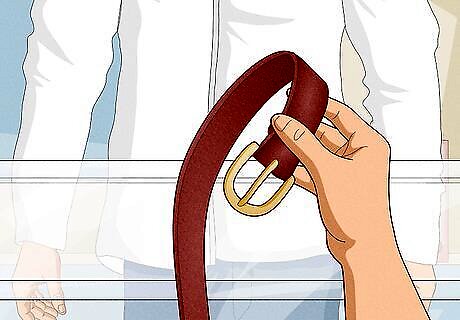
Bring your best-fitting belt along on your shopping trip. If you already have a belt that fits you just right, use it when you’re ready to pick out another belt. At the store, hold your belt up next to any belts that catch your eye—when you find one that’s the same length, you’ll know it will fit! If you’re really thinking ahead, also put on the pair of pants that you’re most interested in wearing with a new belt.
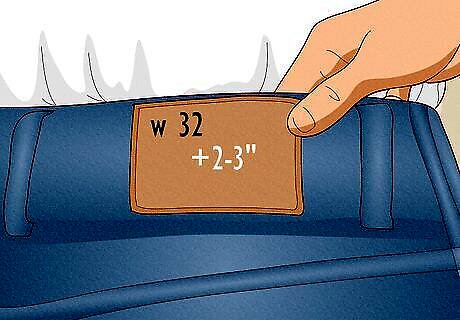
Add 2-3 in/cm to your pants’ waist size if you need a quick estimate. Use this tactic if you see a belt you like while out shopping and don’t have a good-fitting belt on you for comparison. If you know the waist measurement (in inches) of a pair of pants that fits you well, add 2 inches to an even measurement (like 34 inches) and 3 inches to an odd measurement (like 35 inches). If your pants are a 34 inch waist, then, shop for a belt with a “36 inch” label. If the measurement is in centimeters, add 2 cm to an even number (like 86 cm) and 3 cm to an odd number (like 87 cm).
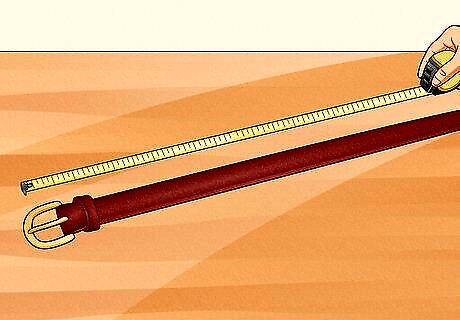
Measure your best-fitting belt for a more accurate size estimate. Lay your old belt out straight on a flat surface, with the buckle facing to your left. Start the tape measure at the far end of the buckle and run it to the sizing hole that you normally use to latch the belt. Round up this measurement to the closest even number in inches/centimeters, and write it down to use when belt shopping. For example, round up a measurement of 30.5 inches to 32 inches, or 78.5 cm to 80 cm. For a belt without sizing holes, such as a fabric belt, put on the belt (with pants) and mark the spot where it buckles with chalk. Take off the belt and measure from the end of the buckle to the chalk mark.

Run a cloth measuring tape through your belt loops for greater accuracy. Put on a pair of nice-fitting pants that you’re looking to match up with a new belt, making sure that the waist is sitting where you normally wear it. Hold the starting point (0 in/cm) of a cloth measuring tape at the front pants button, then feed the measuring tape through the centers of all the belt loops. Overlap the front pants button and record the measurement in inches or centimeters. Round up to the closest even number in inches or centimeters. If your measurement is 32.5 inches, shop for a 34 inch belt. If it’s 88.5 cm, look for a 90 cm belt.

Use a sizing chart, if needed, to convert measurements to size options. While many belts are labeled based on their length measurement, others use designations like “small,” “medium,” and “large.” In this case, look for a sizing chart near the store’s belt display or with the belt’s online description. If you can’t find one, use a generic belt sizing chart from a reputable online source. Belt sizing charts aren't universal, but they're usually pretty similar. For men’s belts, “small” often equals 32 inches (82 cm), “medium” often equals 34-36 inches (88-92 cm), and “large” often equals 38-40 inches (98-102 cm). For women’s belts, “small” often equals 30 inches (78 cm), “medium” often equals 32 inches (82 cm), and “large” often equals 34 inches (88 cm).
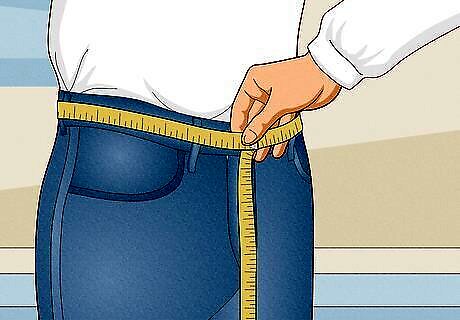
Get measured by a professional belt-maker for the ultimate fit. If you want a premium quality belt that fits you perfectly, this is the way to go! Having a bespoke belt made for you isn’t cheap, of course, but it may be a worthwhile investment if you like to make your belt a focal point of your wardrobe. If you plan to order a bespoke belt online, go to a tailor and have them measure your waist so you get the most accurate info for your order.
Evaluating Style and Functionality
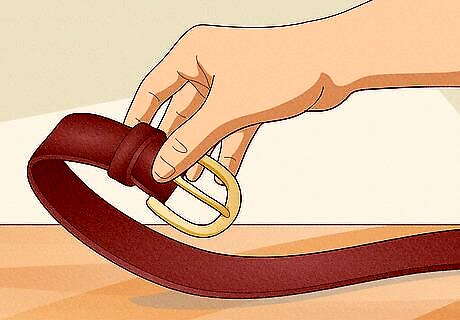
Choose leather (or vegan leather) if you want a multi-purpose belt. A good-quality black or brown leather (or leather alternative) belt pairs with just about anything and can stand up to regular wear-and-tear for years. If you’re looking for one belt that can serve many purposes, this is the material to go with. As opposed to good-quality vegan leather belts, low-quality fake leather belts are unlikely to last for years. But they are a cheaper initial investment.
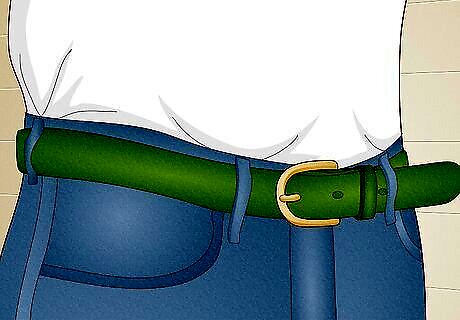
Opt for a canvas or vinyl belt for a more casual and colorful vibe. While leather is the best choice for formalwear and for lasting, non-flashy functionality, it’s also okay to get colorful with your belts! Belts made of canvas, mesh, and similar fabrics won’t look right with a suit, but they come in a range of colors and—depending on the quality—can be very rugged. If you like the look of canvas but the ruggedness of leather, shop for a fabric belt that has a leather backing—that way, you get the best of both worlds! While a brown or black vinyl belt will just look like a really cheap leather knockoff, colorful vinyl belts can add fun pops of style to your casual wardrobe.
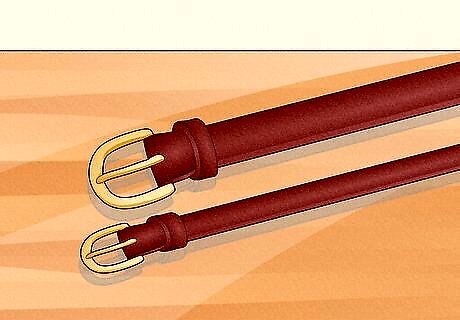
Buy a wider belt for a casual look, and a thinner one for a formal look. The “belt police” won’t come after you if you violate this rule, but formal belts are usually thinner than casual belts. Dressier pants usually have smaller belt loops than casual pants, so there’s also a practical reason to choose a thinner formal belt. Men’s formal belts are usually 1–1.5 in (2.5–3.8 cm) wide. Men’s casual belts are typically 1.5–1.75 in (3.8–4.4 cm) wide. Women’s belts are usually thinner than men’s belts, so expect to subtract around 0.25 in (0.64 cm) from the ranges listed above.
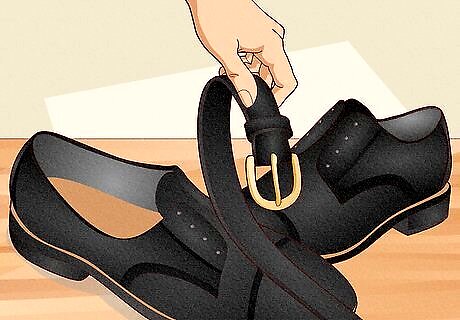
Pick the belt’s color based on the shoes you’ll usually wear with it. This is a more important consideration with formal belts, and less vital when choosing a casual belt. That said, matching the color of your sneakers and belt can make a nice style complement to your favorite pair of jeans. When it comes to formal belts, style experts often recommend matching your leathers. That is to say, you should wear a black leather belt with black leather shoes, a dark brown leather belt with dark brown leather shoes, and a light brown leather belt with light brown leather shoes. The same principle applies if you prefer to wear a leather alternative. If you’re adding a leather (or alternative) jacket, purse, or other item to your wardrobe, try to match the color with your belt and shoes as well.
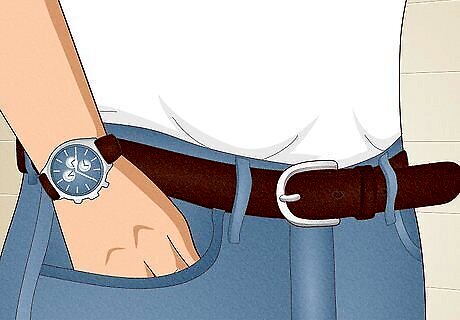
Match the metals on your belt and wardrobe, especially with formal wear. Like matching your leathers, this is a more important consideration when you’re dressing up. Aim to match the color of your belt buckle—or any other metal material on the belt—with your watch, cufflinks, shoe buckles, pins, metal buttons, jewelry, and/or other metal items. Focus primarily on matching larger, more prominent metal items, like your belt buckle and shoe buckles, or belt buckle and hoop earrings. If you wear a particular piece of jewelry—such as a wedding ring—all the time, don’t worry about matching it with a gold-colored belt buckle every time.
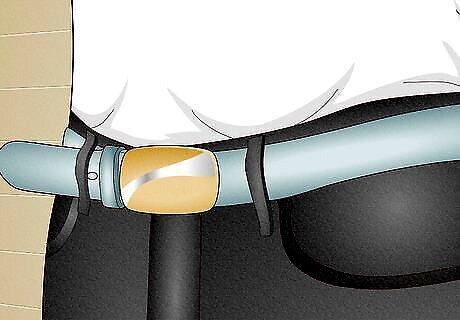
Select a belt buckle type that you find stylish and easy to use. Most leather belts use a metal buckle with a “tongue” that slips through one of the sizing holes in the belt strap in order to secure the belt. This type of buckle is a safe choice for a multi-functional belt, but there are other options to consider as well. For example: Canvas belts often have a sliding latch buckle or a buckle that snaps together. It may be made of metal or plastic. Some leather or vegan leather belts have a braided buckle, which is secured by sizing notches on the underside of the belt strap. Decorative buckles, like the kind that might come to mind when you think of cowboys, can make a big statement—especially if you choose a really big buckle!
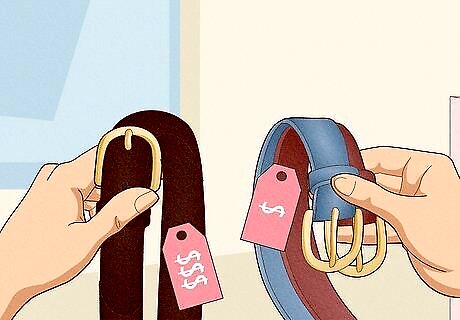
Invest in one or a few expensive belts, or buy several cheap ones. It really comes down to your own preferences here. For roughly the same price, you can buy 2 or 3 well-made belts that will look and work great for years, or maybe 10 cheaper belts in a range of colors and styles that may not last a year. If you just want a black belt and a brown belt that will look good, work well, and go with practically any outfit, it probably makes the most sense to invest in high-end options. If you want to have lots of mix-and-match belt options every day and don’t want to blow your budget in the process, buying cheaper belts is likely the way to go. Just plan on having to shop for belts more frequently!
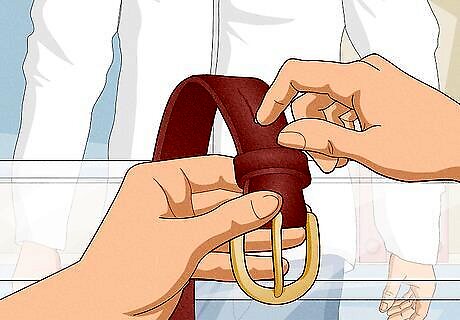
Test the quality of any belt you’re considering buying. Even if you’re buying an inexpensive belt, you don’t want it to just fall apart right away! Look for scratches or tears, check that the stitching is tight, and make sure the buckling mechanism works smoothly. The more expensive the belt, the more discriminating you should be about the craftsmanship. If you’re buying a leather belt, use your fingernail to make a small scrape on the backside of the leather. You’ll leave behind a faint line if the leather is still soft and supple. If you can’t leave a mark, the leather has dried out and toughened and will crack sooner rather than later. Flex and twist a leather belt several times as well. The leather should offer little resistance, and definitely shouldn’t crack.
















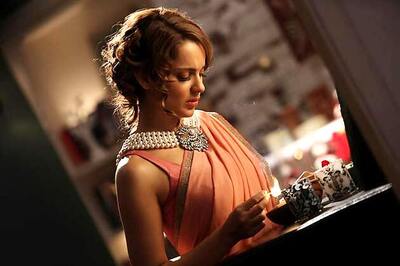


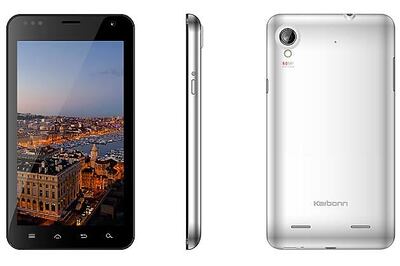
Comments
0 comment